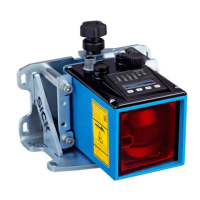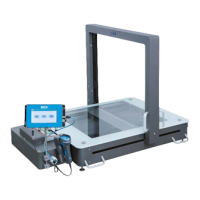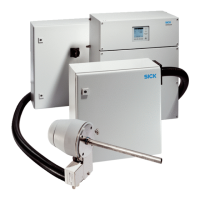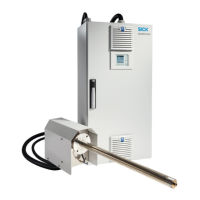Chapter 13 Operating Instructions
DME5000
140 © SICK AG • Germany • Subject to change without notice 8009813/ZJV1/2017-05
Operating hours
Description: Get single Attribute
Class: 64
Instance: 1
Attribute: 32
Receive Data: Time: 0 x 0142 = 322 x 6 min = 1932 min = 32,2 h
e.g. 01 02 03 04 = 0 x 04030201 = 67305985 x 6 min =
403835910 min = 6730598.5 h
13.8 Hiperface Interface
When switching on, the DME5000 provides an absolute digital distance value. It is
requested by the controller via the RS-485 parameter channel. Referring to this absolute
value, the controller then incrementally counts the zero passes of the analog sin/cos
signals when moving and uses them to determine the current position. The RS-485
parameter channel can be used at any time to request an absolute distance value in
parallel to this. This enables verification of the incrementally determined position value.
For a rotating motor feedback system, the analog sin/cos signals are directly generated by
scanning of the code disc inside the encoder, which is firmly connected to the motor shaft.
From a control-technical view, this leads to a highly dynamic, pure P-behavior with very low-
noise sin/cos signals. In addition to counting the sin/cos zero passes, optional Arctan
interpolation implemented on the control side therefore can be used to clearly increase
resolution.
In contrast to rotating systems, the DME5000 works according to the measuring principle
of time of flight measurement. The measuring core of the DME5000 always determines a
digital distance value used to generate the analog sin/cos signals via a D/A converter.
These signals therefore exhibit increased noise, which does not permit any Arctan
interpolation on the control side to increase resolution, but only counting of the zero
passes.
Resolution of the distance value can only be set via the parameter "Period Length". The
following table shows the resolutions for the RS-485 channel and the sin/cos process data
channel. The resolution for the sin/cos process data channel is based on the number of
the 0-passes.
